Steve Jobs: a lifetime of visionary disruption in advancing technology
A Maverick: 1970s
Raised by adopted parents Paul and Clara Jobs in Palo Alto, California, Jobs attended high school in nearby Cupertino, working as a summer intern at Hewlett Packard alongside Steve Wozniak.
After attending some classes at Portland, Oregon's Reed College and then traveling through India on a spiritual retreat, Jobs returned home to what would become recognized as Silicon Valley to begin working for video game maker Atari, again alongside Wozniak.
Jobs described his limited college experience in a 2005 commencement address at Stanford, where he recommended following intuition and passionately pursuing personal interests, citing his drop-in calligraphy classes as the reason why computers today support advanced typography.
"Believing that the dots will connect down the road," Jobs said, "will give you the confidence to follow your heart even when it leads you off the well worn path. And that will make all the difference."
In 1976, at age 21, Jobs worked with 25 year old Wozniak and older investor partners to incorporate Apple Computer, an effort to sell Wozniak's design for a single board home computer to programmer hobbyists. While Wozniak focused on technical details of the software and hardware, Jobs recognized the potential for selling easy to use, complete computers to a mainstream audience.
After following up the original design with the 1977 Apple II, a system that shipped complete with a built-in keyboard and support for sound and expansion cards supporting video and disk storage, Apple began to rapidly gain attention as one of the most popular and highly regarded computer makers of the late 1970s.
Despite being in his early 20s and lacking a formal university education, Jobs worked to recruit experienced executives to help run the fledgling company as sales of personal computers began to explode, starting with National Semiconductor's Mike Scott, who served as Apple's initial chief executive.
As 1980 approached, Jobs looked beyond the existing capabilities of text based, 8-bit computers, exploring the future of technology then under research at Xerox's neighboring Palo Alto Research Center (PARC). Jobs signed an agreement with Xerox that allowed the company to invest in Apple prior to its initial public offering in exchange for Apple's engineers to visit and collaborate with PARC researchers in an effort to bring Xerox' computing usability research to a mainstream audience.
Jobs wasn't the only person to recognize the value of work being done at PARC, but his vision in seeing the potential applications of graphical desktop metaphors, while ignoring the technical boundaries that made those technologies prohibitively expensive at the time for the mass market, allowed Apple essentially a ten year head start in releasing a graphical computing system usable by non-technical users while powerful enough for professionals, an achievement that would win Apple a special niche among both artists and engineers.
On page 2 of 5: A Visionary: 1980s
Jobs' vision in the market for technology products only got stronger and more focused during the 1980s. He pushed Apple to invest tens of millions into making elements of technology that originated at Xerox PARC into a new technology product intended to be as easy to use as a kitchen appliance.
Apple's original graphical computer system, the 1983 Lisa, continued to be too expensive to tap a mainstream audience. In parallel, Apple worked to bring graphical computing elements to its Apple II line while also extending that product to deliver the still text-based Apple III. Rushed to market to keep Apple competitive with the new IBM PC, the Apple III became the company's first significant failure.
Jobs, however, had little interest in the Apple II, III, or the still too expensive Lisa, directing his attention to a secondary effort within Apple to adapt Lisa's graphical computing technology to work on a scaled down system that could be affordable to mainstream audiences. The development of the Macintosh ended up being a far larger and more difficult project than originally anticipated, delaying its release until 1984.
After taking over the Macintosh project, Jobs pushed its engineering team to aspire to achieve greatness, rather than simply delivering a product that could sell. Jobs became notorious for micromanaging details that didn't seem critically important to others, while remaining focused on a vision of a computing appliance anyone could use without the extensive training and regular visits to the owner's manual that computing products of the day required.
Jobs' disregard for existing technical barriers and his passionate efforts to inspire engineers at Apple to deliver the seemingly impossible earned him the notion of having a "reality distortion field" that allowed him to convince others to achieve far more than they thought possible, something that would drive and change the world around him throughout the rest of his career.
Jobs' many critics would later use "RDF" as shorthand for ridiculing Jobs as a charlatan phony, claiming that his "reality distortion field" was just a trick to mislead customers into buying original products rather than the cheap knockoffs those critics usually preferred.
While driving the Macintosh team, Jobs formed new partnerships with Microsoft (to port its struggling DOS spreadsheet software to the Mac's new graphical desktop) and Adobe and Canon (to pair Adobe's PARC-originated PostScript language with Canon's laser printing engine). Jobs also envisioned a "Macintosh Office," where Apple's graphical systems would work together using networking technology developed at PARC to share documents, exchange messages, and collaborate on work projects.
Microsoft would later take the work it collaborated with Apple to build and use it to develop a competing graphical operating environment running on IBM's PC platform, ultimately encouraging Adobe to similarly double-cross Apple in moving its graphical software to Microsoft's Windows platform a decade after Jobs had ignited a market for both companies in developing graphical software for the Macintosh platform.
At the same time, Jobs' vision for the Macintosh Office began to run into financial realities at Apple, as sales of the new system failed to rapidly take off just as competitive pressure from the backward facing IBM PC (a system that belonged firmly in the 1970s) began to gain significant traction among businesses. Apple was successfully selling lots of Apple II systems to schools and home users, populating many offices with a single Lisa for producing complex documents, but sales of the Macintosh were not reaching the mainstream audience as Jobs had hoped.
As the old fashioned IBM PC lumbered into the mainstream, Apple's board and the chief executive Jobs had recruited in 1983, John Sculley, increasingly joined forces to curtail Jobs' efforts to spend more money pushing the Macintosh as Apple's future. In 1984, just as Apple was finally releasing the Macintosh as its next generation system, Sculley announced "Apple II forever" at the unveiling of the company's latest version of the 8-bit text based computer.
While technically uninspiring, the Apple II was earning the vast majority of the company's revenues, making it risky for Jobs to aggressively push the incompatible Macintosh platform. As the economy faltered and Macintosh systems continued to wallow, Jobs differences with the Apple board and CEO finally reached a boiling point that resulted in Jobs' forced departure from the company he founded, at age 30. After his departure, sales of Macs began to increase as the Macintosh Office ignited the new market for desktop publishing.
Jobs later described feeling like a "very public failure" at the time, before "realizing that getting fired from Apple was the best thing that could ever have happened to me. The heaviness of being successful was replaced by the lightness of being a beginner again. Less sure about everything. It freed me to enter one of the most creative periods of my life."
After breaking from Apple, Jobs used the wealth earned from founding the company to create a new enterprise named NeXT Computer, which he envisioned leapfrogging the Macintosh to incorporate a new generation of technology advancements. Originally an effort to develop cross platform tools, NeXT quickly became a hardware competitor, ultimately debuting in 1988 a sleek black cube equipped with an advanced digital signal processor, accurate PostScript graphics and a UNIX-based core operating system with a usability environment built on top of it, giving it a stronger foundation than the appliance-like embedded operating system of the original Mac.
As in the development of the Macintosh, Jobs applied his vision for seeing the application of new technologies that were then confined to computing laboratories, giving the NeXT system an advanced, flexible software development environment that built upon object oriented design, another technology that had its roots at Xerox PARC. Apple pursued legal action to stop NeXT from directly competing with the Macintosh, resulting in an agreement that limited NeXT's potential audience.
On page 3 of 5: An Insider: 1990s
While building NeXT, Jobs had also acquired the graphics division from George Lucas' Lucasfilm for $10 million, hoping to create high end graphics hardware systems under the new name Pixar. That venture was ultimately no more successful than NeXT's hardware, targeted largely at higher education and the professional workstation market.
However, Jobs saw potential in the application of computer graphics as a content production company, and subsequently formed a partnership with Disney to produce computer animated films that Disney would finance and distribute. The resulting movies, beginning with "Toy Story" in 1995, ended up being a series of box office successes over the next decade, making Pixar the most successful animation studio in the world and culminating in the 2006 sale of Pixar to Disney for $7.4 billion, a transaction that made Jobs the largest individual shareholder of Disney and a member of the company's board.
In parallel, Jobs' efforts to find a market for NeXT's advanced technology were increasingly thwarted by problems. After Microsoft prevailed in Apple's "look and feel" lawsuit claiming infringement of original Macintosh concepts, the company was emboldened to appropriate not just Apple's efforts, but also NeXT's. In 1995, Microsoft introduced Windows 95, which borrowed as much of its look from Jobs' NeXT environment as it did from Apple's Macintosh.
Microsoft had also waged a vaporware war against NeXT, with Bill Gates claiming his company would soon deliver the same kind of object oriented development tools in Cairo, a project that never materialized as originally described.
Again, Jobs reached out to form partnerships with Sun, HP and others. After the hardware business end of NeXT failed to gain traction, Jobs rapidly transitioned the company to focus on developing advanced software development tools and a highly intuitive user environment, creating a layer of software that could potentially run on any hardware.
And once again, Jobs' partners ultimately double-crossed him, with HP leaping to join IBM and Apple on a competing partnership called Taligent, while Sun abandoned Jobs' vision for an open specification for a software development environment based on NeXT's technologies, after working with NeXT to create OpenStep, in order to instead pursue its own Java, a language and runtime environment that similarly worked to displace the SmallTalk-inspired work NeXT had developed a decade earlier.
By 1996, Jobs had focused NeXT upon web applications as the most viable option for applying its technology, but the near collapse of Apple provided a new opportunity for the company. At the end of the year, Apple acquired NeXT for $429 million, aiming to use its powerful, flexible operating system and advanced development environment to revitalize its increasingly outdated Mac platform, following the collapse of both the Taligent partnership with IBM and Apple's own internal Copland project.
Jobs initially appeared hesitant to become involved in running Apple, which at the time had profound operational problems, a tarnished brand, and was experiencing staggering financial losses. Apple was also facing increasing pressure from Microsoft Windows, which had erased much of the Mac's differentiating features while promising to deliver a graphical computing environment at a lower cost than Apple by leveraging the vast economies of scale in the PC industry.
As Jobs examined the state of Apple ten years after his departure, he began to identity a series of things the company had to stop doing, while also creating a strategy for recovery centered around innovation. Jobs made aggressive cuts to Apple's complex product lines, resulting in a radically refined number of Mac models just one year later and a termination of poorly conceived Mac OS licensing program that had originally been created to imitate Microsoft's business model.
Instead, Jobs pushed through a public agreement with Microsoft that exchanged a vote of confidence by Microsoft in Apple (via both a publicized investment in stock as well as a commitment to bring modern versions of Office software to the Mac) for a cross licensing agreement that terminated longstanding legal challenges Apple had in play against its Windows competitor.
At the same time, Jobs rapidly pushed the new Apple to deploy NeXT's state of the art web application technology to build a sophisticated online store capable of selling custom built Macs directly to users. Jobs also recruited Tim Cook from Compaq to help solve Apple's operational mess, which included closing the company's complex network of factories and storage warehouses that were taxing the company's productivity and profits.
Adapting work Apple had previously done to create a Network Computer, Jobs unveiled the iMac in 1998 as a signature new distinct offering that would define the look of its products around the millennium. Applying a industrial design team lead by Jonathan Ive, who had joined Apple in 1992 before being promoted to lead Apple's design in 1998, Jobs worked to build a recognizable, high quality product experience around the Apple brand.
Jobs also initiated a retail store effort within Apple, recruiting Ron Johnson from Target to lead the company's retail push and installing Millard Drexler, the chief executive of J Crew and former CEO of the Gap, on Apple's board.
By the end of the 1990s, Jobs had turned Apple from a beleaguered failure into a regularly profitable company with a revitalized brand and a clear future strategy, although there was still considerable doubt about whether Apple's hardware business could ever become anything more than a niche business servicing a dedicated following of loyal customers.
On page 4 of 5: A Disruptor: 2000s
Throughout the 2000s, Jobs further challenged the status quo with a rapidly snowballing strategy of investment in innovation that included a well-funded push to enhance the company's PowerBook mobile computers; the development of the iPod in 2001; the creation of an open source web engine to power the company's own Safari browser; the acquisition of a series of application development firms that resulted in the creation of a suite of professional, creative and productivity apps including Final Cut, Logic, Aperture, iLife and iWork; and investments in multitouch that would ultimately result in the iPhone, iOS and last year's iPad release.
Core to all of these developments was a reimagining of the Mac platform as a digital hub, a strategy Jobs unveiled in 2000. Jobs' comprehensive vision for what Apple could build was increasingly crafted around Mac OS X, a refined and modernized edition of the NeXT software that first appeared in 1988.
In 2001, Jobs unveiled the first consumer edition of Mac OS X, tied to a revolutionary new graphics system that drew windows and other elements using the same hardware accelerated graphics techniques that video games use. The new operating system was described as having a fifteen-year development strategy behind it, and over the next decade Apple regularly launched new reference releases that enhanced performance, added new functionality, and increasingly simplified and embellished the usability of the system, forging a new path in consumer computing technology divergent from previous products.
Parallel with Mac OS X, Jobs unveiled plans to revolutionize the market for digital music with iTunes and then the iPod, which together have not only taken over and transformed the music business, but have further changed how videos, ebooks, and mobile software are sold and distributed.
When Microsoft announced it would defeat the increasingly successful iPod using a Windows-like strategy that leveraged its PC manufacturing partners, Jobs fought back with innovation, delivering powerful but easy to use new product revisions that grew smaller and thinner as the company's manufacturing and design prowess evolved. This year, Microsoft admitted complete defeat in unseating the iPod after a decade of attempts with PlaysForSure and Zune.
As the iPod became Apple's cash cow, pundits next looked to smartphones as its most likely competitor, but Jobs directed the company to develop its own replacement for the iPod, starting with internal designs for a tablet-sized web browser device and then focusing efforts on building a handheld computing device that leveraged the core functionality and development tools of Mac OS X and Apple's device savvy with building iPods, then deploying the new device as a radical rethinking of the smartphone.
Jobs' iPhone melded the Mac and the iPod into a single device, subsidized by mobile carriers in a way that would create a massive revenue stream for Apple and allow it to continue innovating at a breakneck speed. Jobs then turned the iPhone itself into an iPod with the iPod touch, which has since become the company's most popular iPod device. Counting both iPods and all other iOS devices, Apple has sold well over half a billion mobile devices in just over a decade, wildly overshadowing its original Mac business.
But Jobs didn't abandon desktop computing. Instead, his company has developed Mac OS X and iOS in tandem, sharing core technologies between the two and adapting the desktop to take increasing advantage of the usability concepts pioneered for iOS, including enhanced animation in the user environment, simplified user interface controls and multitouch navigation.
One year ago, Jobs' "Back to the Mac" public keynote address outlined not only how the company would adapt Mac OS X Lion to incorporate developments from its mobile iOS devices, but also that Macs would gain the same App Store software market for buying applications.
Of course, major elements of Jobs' presentation were built upon the wild success of the iPad, a product that was originally envisioned within Apple before the iPhone, but left to gestate while the iPhone built Apple into a super power of mobile device sales.
By the end of the 2000s, Jobs had not just beat Microsoft in music players, but had also usurped the company's crown in leading desktop operating system development as well as taking away Microsoft's mobile phone aspirations entirely. When the iPhone first appeared in 2007, Microsoft's chief executive Steve Ballmer scoffed at the idea that Apple could take more than a couple percentage points of the smartphone market. Over the next four years however, Apple, under Jobs' leadership, would become the number one mobile device maker on the globe, inhaling the vast majority of the entire industry's profits.
Within the last decade, Jobs' Apple had also surpassed Microsoft in revenues and in earnings, but Microsoft isn't the only company decimated under the boot of Apple's marching advancement. Job's pace of innovation at Apple had also embarrassed Sony, once an undisputed leader in consumer electronics led by its Walkman brand. In mobile devices, Jobs simply crushed Nokia, RIM, Palm and even its former "iTunes phone" partner Motorola. Apple even managed to embarrass Nintendo, taking away the revenues supporting the portable gaming market through the development of the iOS App Store.
Jobs similarly disrupted the virtual lock on web videos and dynamic content that Adobe had maintain with Flash Player, introducing iOS as a tremendous impetus for web developers to abandon the proprietary Flash and adopt open HTML5 development instead. That action similarly effaced Microsoft's Silverlight, which aspired to simply embrace, extend and extinguish Flash.
Once again, however, Jobs formed an external partnership, this time with Google, to help deliver Internet services for iPhone, including Maps, YouTube and web search. And once again, Jobs' partnership turned into a rivalry when Google's chief executive initiated a plan to turn its internal Windows Mobile killer into a weapon against the iPhone, hoping to, like Microsoft, leverage partnerships with other hardware makers to take away the market Jobs had crafted.
In early 2010, it appeared Google's Android was overtaking Apple's iPhone business, facilitating the introduction of more innovative hardware with higher resolution screens and software features Apple hadn't yet delivered, including some features core to Google's own services, such as Maps Navigation. Verizon Wireless formed a key partnership with Android licensees, helping Google gain an important foothold in the market as sales of Android-branded phones increased dramatically.
However, by the middle of last year, Jobs introduced his own weapon: iPhone 4, a model that beat back complaints that Apple's design was tired and basic, its camera was weak and its screen resolution was lagging. On top of its new offering, Jobs presented FaceTime video conferencing and a further aggressive push in software ranging from video games to enterprise support, two areas notably lacking in Android.
After the release of iPhone 4, Android sales at Verizon began to plateau, with AT&T winning loyal new subscribers as the global market for iPhones exploded. With Verizon's faith in Android weakened, the carrier returned to Apple to gain access to the iPhone, subsequently helping to make iPhone 4 America's most popular smartphone model by far, with the 2009 iPhone 3GS remaining the second most popular model.
On page 5 of 5: A Legend: 2011
Despite nearly inconceivable success both in completely reimagining Apple since the 1996 acquisition of NeXT into the world's largest public company and most profoundly important and powerful technology company of the last decade, and then performing a similar makeover of Disney following its acquisition of Pixar a decade later in 2006, Jobs finally met his match against the most brutal competitor of mankind, the cruel fate of a senseless assault within his physical body.
Jobs announced his struggle with pancreatic cancer in 2004, then went through surgery to remove the tumor, a procedure that appeared to be successful. He continued to deal with related health problems, apparently again in 2008, when his typical Macworld Expo keynote was delivered by Phil Schiller instead. Jobs later announced that he had "learned that my health-related issues are more complex than I originally thought," and took a second leave of absence for six months through the first half of 2009.
During that time, Jobs underwent a liver transplant, and reportedly was given an "excellent" prognosis. At the beginning of this year, Jobs announced a third medical leave of absence to "focus on his health," although he made public appearances in March at the iPad 2 launch, again in June to debut iCloud at Apple's Worldwide Developer Conference, and a second time in June to present plans to the Cupertino city council for building Apple Campus 2.
Jobs three public appearances in 2011 were each highly significant. The launch of iPad 2 was important enough to obliterate the market for competing tablets based on Android 3.0 Honeycomb, Windows 7, HP's webOS, and RIM's PlayBook QNX.
The debut of iCloud allowed Jobs to redefine the digital hub from being centered around a desktop computer to being a new generation of Internet cloud services that will be hosted by Apple, instantly updating music, photos, apps, video and documents wirelessly between devices and computers with the same intuitive, but deceptively complex technology that supports push messaging.
Jobs first outlined his future vision for cloud computing for Apple in a presentation at WWDC 1997, where he described cloud storage network technologies put into place at NeXT over the previous decade. Over a decade later, Jobs described at WWDC 2011 how Apple would be deploying just that as its "next big insight" as iCloud later this year.
Finally, Jobs' legacy will be further enshrined in Apple Campus 2, a futuristic, actively functional landmark of curved glass set among a repopulated forest of apricots and other trees centered within Cupertino, the city he grew up in and where he founded, and then rescued, his vision for a technology company making insanely great, intuitive tools for mainstream audiences to use, love and admire.
August 24, Jobs announced he could "no longer meet my duties and expectations as Apple’s CEO," and recommended that Tim Cook serve as his replacement. Jobs continued to sit on Apple's board as Chairman. October 5, Apple announced Jobs had passed away, just one day after announcing his final product to see released at Apple, the iPhone 4S.
Jobs, along with Wozniak, were awarded among America's first to receive a National Medal of Technology from President Ronald Reagan in 1984. Jobs was named the most powerful person in business in 2007 by Fortune, the same year he was inducted into the California Hall of Fame by then governor Arnold Schwarzenegger. In 2009, Jobs was named CEO of the Decade by Fortune. Last year, the Financial Times named Jobs its 2010 person of the year. Jobs was 56.
"No one wants to die," Jobs told his Stanford commencement audience in 2005. "Even people who want to go to heaven don't want to die to get there. And yet death is the destination we all share. No one has ever escaped it. And that is as it should be, because Death is very likely the single best invention of Life. It is Life's change agent. It clears out the old to make way for the new. Right now the new is you, but someday not too long from now, you will gradually become the old and be cleared away. Sorry to be so dramatic, but it is quite true.
"Your time is limited, so don't waste it living someone else's life. Don't be trapped by dogma — which is living with the results of other people's thinking. Don't let the noise of others' opinions drown out your own inner voice. And most important, have the courage to follow your heart and intuition. They somehow already know what you truly want to become. Everything else is secondary."
Jobs concluded his advice to college grads with the words, "Stay Hungry. Stay Foolish."
 Daniel Eran Dilger
Daniel Eran Dilger

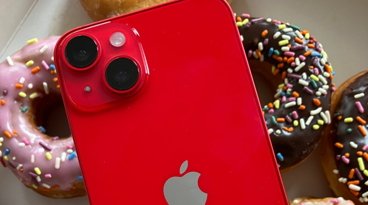


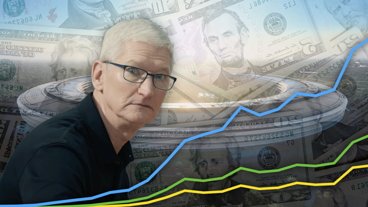
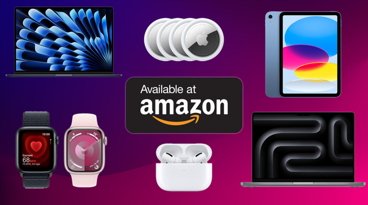





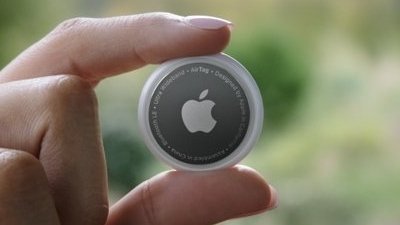
 Amber Neely
Amber Neely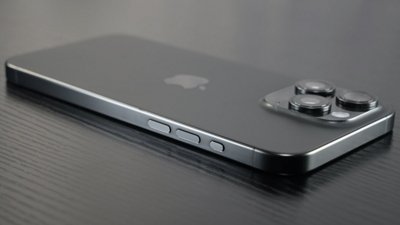
 Andrew Orr
Andrew Orr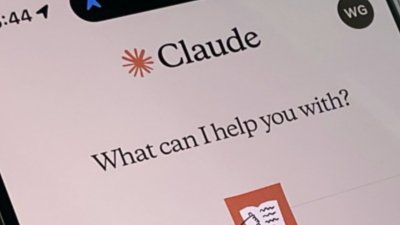
 William Gallagher
William Gallagher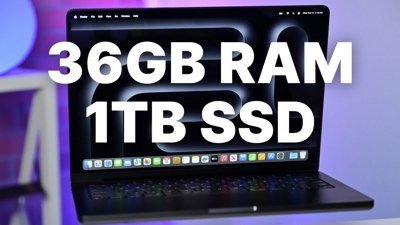
 Christine McKee
Christine McKee
 Malcolm Owen
Malcolm Owen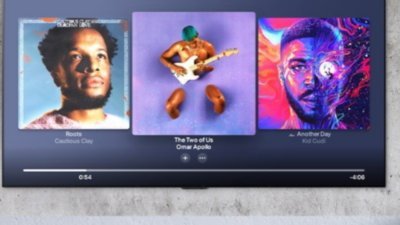
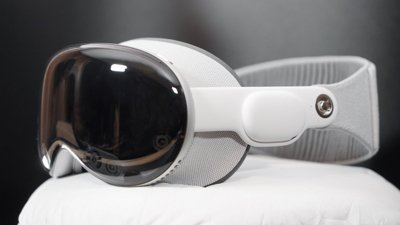
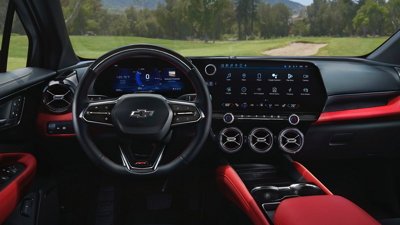

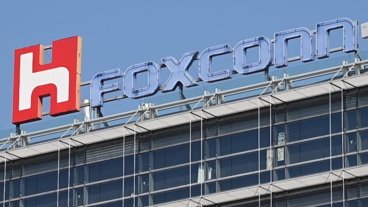








34 Comments
Kasper, this is really great work. thank you.
Well done Daniel. Something only a true Apple fan could have written. Thank you.
Steven Paul Jobs
... insanely great...
"Your time is limited, so don't waste it living someone else's life. Don't be trapped by dogma — which is living with the results of other people's thinking. Don't let the noise of others' opinions drown out your own inner voice. And most important, have the courage to follow your heart and intuition. They somehow already know what you truly want to become. Everything else is secondary."
"Stay Hungry. Stay Foolish."
[ View this article at AppleInsider.com ]
Most people term Steve Jobs' intensity as passion but it is indeed Love.
Love is the universal vital force that is creative and brilliant and to be in love or passionate about someone or something or an idea is really a symptom of Love.
It is that Love, that Life Force and Brilliance, that original and creative vitality, that Steve Jobs, like no other, put into his work, into his baby Apple Inc, into his many products, and I'm sure into his family, and that energy, once embedded into each and every product and into Apple itself, is recognized by everyone.
We all feel the Love, Beauty, Brilliance, Creativity, Joy and Light in Apple's products and, in a Love starved human society, that's why we desperatly want to buy them, own them, show them off. For they bring those very same qualities into our life as well.
Many Apple fans recognized this when they described Apple's struggles with their copycats as the fight between good and evil.
This Love is the energy behind Steve Jobs, Apple's products and Apple, Inc..
This Love is the energy Steve Jobs used to build his company and choosing its workforce and the reason why everybody, consciously or not, are relaxed regarding Apple's future without Jobs' physical presence. Apple is full of Love centric people who can do anything other than execute on the principles of Love and its many expressions. Even its organization, I speculate, is built upon that same core energy.
That Love energy is obviously expressed into the new Apple spaceship headquarters in more ways than one. It is like a castle protecting the Love inside. It's like a spaceship indeed, where dreams and vision can fly and become materialized in purity with little interference. It's shaped as a 0 (zero) which, like the number 1, spells Unicity and God. 0 and 1, the digital values.
Last but not least, Steve's comments about life and death came from experience: he "died" when he was thrown out of the company he started. But, while he turned that into an opportunity, he used it as the base to re-invent himself and start with a clean slate. And what this "death" brought him the most was summed up in this word: [b]Focus.[\\b]
Love, Brilliance (a derivative of Love) and Focus (a lot of Love).
His lessons to the world. His legacy. Our inheritance from Steve Jobs.
The world is now a better place, the world is richer!
I Love Steve Jobs.
Long live Steve Jobs!
Long live Apple, Inc.!Wishes of Joy, Love and Light to all, especially to Steve Jobs' family and friends (Steve's family is indeed great).
It is very sad to wake up to these news. Steve Jobs was a very inspiring visionary for the human kind and has single handedly pushed humanity into the future. The world will miss Steve Jobs.
RIP Steve Jobs.
A pleasure to read. Thanks
I always thought Steve would be around to see to the completion of the new Apple campus. That would have been nice. Well, now he can see it from the stars above. RIP